Subtotal: £44.51
Banded Archerfish – Toxotes jaculatrix, Easy Care Fish for Beginners, Perfect Choice for Those Looking to Create a Stunning Brackish Environment in Their Home Aquarium
£29.49 Original price was: £29.49.£25.00Current price is: £25.00.
Welcome these beautiful Banded Archerfish (Toxotes jaculatrix) into your brackish aquarium! With their stunning colors and graceful movements, these tropical fish are ideal for beginners. Create a flourishing habitat with plants to enhance their natural beauty and thrive in your care.
Species Introduction
The Banded Archerfish, scientifically known as Toxotes jaculatrix, is an enchanting species that hails from the brackish waters of Southeast Asia, particularly found in mangrove swamps, estuaries, and coastal regions. These remarkable fish are renowned for their unique hunting technique, where they shoot jets of water to knock insects and other prey from overhanging branches into the water. This fascinating behavior not only showcases their adaptability but also their intelligence. The Banded Archerfish can grow to a size of approximately 12 inches (30 cm) in length, making them a striking addition to any aquarium setup. Their elongated bodies and distinctive banding pattern provide a visual appeal that is hard to resist. As you consider welcoming these beautiful creatures into your aquatic environment, understanding their natural habitat and behavior is essential for providing them with the best care possible.
Care Requirements Dashboard
Essential Care Guide for Your Banded Archerfish – Toxotes jaculatrix
| Optimal Living Conditions | |
|---|---|
| Water Temperature | 24-27°C (75-81°F) |
| pH Level | 6.5-7.5 |
| Water Hardness | 4-12 dKH |
| Minimum Tank Size | 80L (20 gal) |
| Salinity | Freshwater |
| Care Level | Beginner Friendly |
✓ Care Level: Moderate
Tank Size: Minimum 50 gallons
Water Temperature: 75-82°F (24-28°C)
pH Level: 7.0-8.0
Water Hardness: 10-20 dGH
Natural Behavior & Temperament
Banded Archerfish are known for their curious and active nature. They are social fish that thrive in groups, exhibiting a range of behaviors that include swimming in schools and interacting with their environment. Their unique hunting method not only showcases their intelligence but also their adaptability to various feeding situations. In the aquarium, they may display territorial behavior, especially during feeding times or when they are establishing their space. It’s essential to provide them with plenty of room to swim and explore, as well as hiding spots to feel secure. When kept in a suitable environment with compatible tank mates, these fish can be quite peaceful and display interesting social dynamics. Understanding their natural behavior is crucial for creating a harmonious aquarium environment.
Tank Setup Guide
To create an ideal habitat for your Banded Archerfish, a well-planned tank setup is essential. A minimum tank size of 50 gallons is recommended to accommodate their active swimming behavior. The substrate should be soft and sandy, mimicking their natural environment. Incorporate plenty of plants, driftwood, and rocks to provide hiding spots and create a stimulating environment. Live plants not only enhance the aesthetic appeal but also contribute to water quality by absorbing nitrates. The tank should be well-filtered to maintain water quality, and a gentle water flow is preferred. Additionally, consider adding floating plants to provide shade and cover, as Banded Archerfish are known to prefer areas where they can hide from potential predators. Proper lighting is also important; aim for a natural daylight cycle to promote healthy growth of plants and maintain the well-being of your fish.
Water Quality Management
Maintaining optimal water quality is crucial for the health of your Banded Archerfish. The ideal pH range for these fish is between 7.0 and 8.0, with a water hardness of 10-20 dGH. Regular testing of water parameters is essential to ensure stability and prevent fluctuations that could stress your fish. The water temperature should be kept between 75-82°F (24-28°C), and it’s advisable to use a reliable heater to maintain consistent temperatures. Additionally, perform regular water changes of 20-30% weekly to help remove toxins and replenish essential minerals. A quality filtration system is vital to keep the water clean and clear, as Banded Archerfish are sensitive to poor water conditions. Monitoring ammonia, nitrite, and nitrate levels will help you maintain a healthy environment for your aquatic companions.
Feeding & Nutrition
✓ Diet: Carnivorous
Banded Archerfish are carnivorous and thrive on a varied diet. They enjoy high-quality pellets, live foods such as brine shrimp and bloodworms, as well as freeze-dried options. It’s important to provide a balanced diet to ensure their health and vitality. Feeding should occur 2-3 times a day, offering only what they can consume within a few minutes to prevent overfeeding and maintain water quality. As these fish are natural hunters, incorporating feeding techniques that mimic their natural hunting behavior can enhance their well-being. Consider using floating foods to encourage their shooting behavior, allowing them to practice their unique feeding skills. Always monitor their feeding habits and adjust portions as necessary to maintain a healthy weight.
Compatibility Guide
When selecting tank mates for your Banded Archerfish, it’s important to choose species that can coexist peacefully. They are generally compatible with other semi-aggressive fish, such as larger tetras, barbs, and some cichlids. However, avoid keeping them with small or timid fish that may become targets for their hunting instincts. Additionally, be cautious with overly aggressive species that could stress your Archerfish. A well-balanced community tank with plenty of swimming space and hiding spots will promote harmony among your aquatic friends. Regular observation of interactions will help you identify any potential conflicts and make adjustments as necessary to ensure a peaceful environment.
Health & Wellness
Maintaining the health and wellness of your Banded Archerfish involves regular monitoring and preventive care. Common health issues include ich, fin rot, and other parasitic infections. To prevent these conditions, ensure that your water quality is optimal and that your fish are not stressed. Quarantine new arrivals before introducing them to your main tank to prevent the spread of disease. Regularly inspect your fish for any signs of illness, such as changes in behavior, appetite loss, or visible lesions. If any health issues arise, prompt treatment is essential. Consult with a veterinarian or an aquarium specialist to determine the best course of action. Providing a stress-free environment with appropriate tank mates and conditions will significantly contribute to their overall well-being.
Breeding Information
Breeding Banded Archerfish in captivity can be a rewarding experience, though it requires specific conditions to encourage spawning. They typically breed in brackish water, so replicating these conditions in your aquarium is crucial. A separate breeding tank with a gentle filter, suitable substrate, and plenty of hiding spots will create a conducive environment. When ready to breed, the male will display courtship behavior, and the female will lay eggs among the plants or substrate. After spawning, it’s advisable to remove the parents to prevent them from eating the eggs. The eggs will hatch in about 24-48 hours, and the fry will require infusoria or finely crushed food until they are large enough to consume regular fish food. Proper care and attention during this stage are vital for the survival and growth of the young Archerfish.
Acclimation Process
Acclimating your Banded Archerfish to their new environment is a critical step in ensuring their health and well-being. Upon bringing them home, float the sealed bag in the aquarium for about 15-20 minutes to equalize the temperature. After this, gradually introduce small amounts of tank water into the bag over the course of an hour. This process helps the fish adjust to the new water chemistry. Once acclimated, gently release them into the tank using a net to avoid adding any store water that may contain harmful substances. Monitor their behavior closely for the first few days to ensure they are adjusting well to their new home.
Long-term Care
The long-term care of your Banded Archerfish involves regular maintenance of their environment and health monitoring. These fish can live for several years with proper care, so establishing a routine is essential. Regular water changes, consistent feeding schedules, and monitoring water parameters will help ensure a stable environment. As they grow, be prepared to upgrade their tank size if needed, as they require ample swimming space. Additionally, keep an eye on their social dynamics, as they may need adjustments in tank mates as they mature. With attentive care and a suitable environment, your Banded Archerfish will thrive and bring beauty to your aquarium for years to come.
Natural Habitat Recreation
Recreating the natural habitat of Banded Archerfish in your aquarium is vital for their well-being. These fish thrive in brackish waters, so incorporating marine salt into their freshwater tank can help mimic their natural environment. The addition of driftwood, rocks, and live plants will provide shelter and enhance the aesthetic appeal of the tank. Floating plants are particularly beneficial, as they offer shade and mimic the overhanging vegetation found in their natural habitat. Aim to create a varied landscape with open swimming areas and hiding spots to promote natural behaviors. This biotope setup will not only benefit your fish but also create a visually stunning aquarium.
Seasonal Care Adjustments
As seasons change, so do the needs of your Banded Archerfish. During warmer months, ensure that the water temperature remains stable, as fluctuations can stress your fish. Consider using a heater with a thermostat to maintain consistent temperatures. In colder months, be vigilant about maintaining warmth, as sudden drops can be harmful. Additionally, monitor the lighting schedule to mimic natural daylight cycles, which can influence breeding behaviors and overall health. Adjusting your maintenance routine to accommodate seasonal changes will help ensure the long-term health and happiness of your aquatic companions.
Expert Tips
For those looking to provide the best care for their Banded Archerfish, consider the following expert tips: First, invest in a high-quality water testing kit to monitor parameters regularly. This proactive approach will help you catch any potential issues before they escalate. Second, provide a varied diet to ensure nutritional balance; consider rotating between pellets, live foods, and frozen options. Third, observe their behavior closely; any changes can indicate stress or health issues. Lastly, engage with fellow aquarists or join online communities to share experiences and gain insights into advanced care techniques. By staying informed and proactive, you can create a thriving environment for your Banded Archerfish.
Troubleshooting
In the event of common issues with your Banded Archerfish, it’s essential to have a troubleshooting plan in place. If you notice signs of stress, such as hiding or erratic swimming, first check water parameters to ensure they are within the recommended ranges. If you observe any physical signs of illness, such as white spots or frayed fins, isolate the affected fish and consult a veterinarian for appropriate treatment. Regular maintenance, including water changes and filter cleaning, will help prevent many common problems. Additionally, ensure that your tank mates are compatible and not causing undue stress. With attentive care and a proactive approach, you can address issues before they become serious.
Scientific Background
The Banded Archerfish belongs to the family Toxotidae, which is characterized by their unique adaptations to brackish environments. Their ability to shoot jets of water is a remarkable evolutionary trait that allows them to hunt effectively in their natural habitat. Research on the Banded Archerfish has provided insights into their behavior, physiology, and ecological significance. Conservation efforts are essential to protect their habitats, as pollution and habitat destruction pose threats to their populations. Understanding the scientific background of these fish not only enhances our appreciation for them but also emphasizes the importance of responsible aquarium practices that support their health and conservation.
Advanced Care Techniques
For experienced aquarists looking to elevate their care for Banded Archerfish, consider implementing advanced techniques such as creating a biotope aquarium that closely resembles their natural environment. This involves careful selection of plants, substrate, and tank mates that reflect their native habitat. Additionally, utilizing a high-quality filtration system with UV sterilization can enhance water quality and reduce the risk of disease. Experimenting with different feeding strategies, such as training them to feed from the surface or using feeding rings, can also promote natural behaviors. By continuously educating yourself and adapting your care techniques, you can ensure a thriving and healthy environment for your Banded Archerfish.
Water Quality Parameters
Optimal Range
24-27°C
6.5-7.5
0 ppm
Caution Zone
22-24°C or 27-29°C
6.0-6.5 or 7.5-8.0
0.25-0.5 ppm
Danger Zone
<22°C or >29°C
<6.0 or >8.0
>0.5 ppm
Monitoring Tip: Test water parameters weekly and perform regular water changes to maintain optimal conditions for your aquatic friends!
Frequently Asked Questions
Q: What tank size is required for Banded Archerfish?
Banded Archerfish, Toxotes jaculatrix, thrive best in a spacious aquarium, ideally a minimum of 200 litres (53 gallons). This size allows ample swimming space and helps maintain stable water parameters. As they can grow up to 25 cm (10 inches), a larger tank accommodates their size and territorial behaviour. Additionally, a larger volume of water aids in diluting waste products, thereby enhancing water quality. Ensure the tank is well-covered, as Archerfish are known to jump, especially when startled. A well-planted tank with open swimming areas will mimic their natural habitat, promoting their overall health and wellbeing.
✓ Expert Tip
Regularly monitor the tank size as your Archerfish grows, and consider upgrading if necessary.
Q: What water parameters do Banded Archerfish require?
Banded Archerfish prefer brackish water conditions, so maintaining a salinity of 1.005 to 1.015 is crucial. The ideal temperature range is between 24°C to 28°C (75°F to 82°F). pH levels should be maintained between 6.5 and 8.0, and hardness should be around 10-20 dGH. Regular water changes of about 10-15% weekly are advisable to maintain optimal water quality, which is essential for their health. Always use a reliable water testing kit to monitor these parameters, as fluctuations can lead to stress and health issues.
✓ Expert Tip
Consider using marine salt mix during water changes to achieve the desired brackish conditions.
Q: How often should I feed Banded Archerfish?
Banded Archerfish require a varied diet to thrive. Feeding them 2-3 times a day is recommended, providing small amounts that they can consume within a few minutes. Their diet should consist of high-quality pellets, live or frozen foods such as brine shrimp, and insects, mimicking their natural hunting behaviour. It is essential not to overfeed, as this can lead to water quality issues and health problems. Observe their feeding habits and adjust quantities as needed to prevent waste. Regularly feeding a varied diet also supports their colouration and overall health.
✓ Expert Tip
Introduce new food types gradually to avoid digestive issues.
Q: What are the best tank mates for Banded Archerfish?
Banded Archerfish are semi-aggressive and do best with tank mates that can withstand their more assertive behaviour. Suitable companions include larger tetras, rainbowfish, and some cichlids. Avoid smaller or slower fish, as they may be seen as prey. It is also wise to keep them in groups of at least three to minimise stress and display natural schooling behaviour. Providing ample hiding spots and swimming space will help reduce territorial disputes. Always monitor interactions and be prepared to separate fish if aggression escalates.
✓ Expert Tip
Introduce new fish gradually to minimise stress within the established community.
Q: How do I properly acclimatise Banded Archerfish to my aquarium?
Acclimatising Banded Archerfish is crucial to ensure their health and reduce stress. Begin by floating the sealed bag containing the fish in your aquarium for about 15-20 minutes to equalise the temperature. After that, gradually introduce aquarium water into the bag over the next hour, allowing the fish to adjust to the water parameters. You can do this by adding small amounts of water from the tank to the bag every 10 minutes. Once acclimatised, gently release the fish into the aquarium without adding the bag water. This method helps to mitigate shock and ensures a smoother transition.
✓ Expert Tip
Avoid adding any chemicals to the bag water during acclimatisation.
Q: What are the signs of healthy Banded Archerfish?
Healthy Banded Archerfish should exhibit bright, vibrant colours and clear eyes. They should be active swimmers, displaying natural behaviour without excessive hiding. Look for smooth, unblemished scales and fins, as any lesions or frayed fins may indicate health issues. Healthy fish also maintain a good appetite and respond well to feeding. Regularly observing their behaviour can help you detect any changes that might signal stress or illness, allowing for prompt action. Maintaining optimal water conditions and a balanced diet will further ensure their wellbeing.
✓ Expert Tip
Keep a journal to track any changes in behaviour or appearance.
Q: How do I successfully breed Banded Archerfish?
Breeding Banded Archerfish can be a rewarding challenge, requiring specific conditions. Set up a separate breeding tank with a capacity of at least 100 litres (26 gallons), filled with soft, slightly acidic water. Introduce a male and female, ensuring they are well-fed and healthy. Provide spawning sites using fine-leaved plants or spawning mops. Once the female lays eggs, remove the adults to prevent them from eating the eggs. The eggs typically hatch within 24-48 hours. Feed the fry infusoria or finely crushed flakes until they are large enough for more substantial food. Monitoring water quality is vital during this period.
✓ Expert Tip
Ensure the breeding tank is well-cycled to provide a stable environment for the fry.
Q: What temperature should I maintain for Banded Archerfish?
Banded Archerfish thrive in a temperature range of 24°C to 28°C (75°F to 82°F). Maintaining this temperature range is crucial for their health, as fluctuations can lead to stress and susceptibility to diseases. Use a reliable aquarium heater equipped with a thermostat to ensure consistent temperatures. Regularly check the water temperature with an accurate thermometer, particularly during seasonal changes. If you notice any significant fluctuations, take corrective measures immediately, such as adjusting the heater or relocating the tank if necessary.
✓ Expert Tip
Consider using a backup heater to ensure stability in case of equipment failure.
Q: How long do Banded Archerfish typically live in captivity?
Banded Archerfish can live for 10 to 15 years in captivity with proper care. Factors influencing their lifespan include water quality, tank size, diet, and overall health management. Regular maintenance, including water changes and monitoring of water parameters, is essential for longevity. Additionally, providing a balanced diet and ensuring compatibility with tank mates will contribute to their wellbeing. Observing their behaviour and health regularly can help detect any issues early, allowing for prompt intervention and care.
✓ Expert Tip
Keep a consistent care routine to enhance their quality of life and longevity.
Q: What type of substrate is most suitable for Banded Archerfish?
Banded Archerfish prefer a sandy substrate that mimics their natural habitat, which consists of riverbeds and estuaries. A fine, smooth sand substrate is ideal, as it allows for easy digging and prevents injury to their delicate bodies. Additionally, a sandy base supports beneficial bacteria growth, contributing to overall water quality. Avoid sharp or coarse substrates, as these can cause damage to the fish. Providing a well-planted environment alongside sandy areas can create a more enriching habitat for your fish companions.
✓ Expert Tip
Layer the substrate with larger gravel at the bottom to promote stability.
Q: What behavioural patterns should I expect from Banded Archerfish?
Banded Archerfish are known for their unique behaviour, particularly their ability to shoot jets of water to knock insects off overhanging branches. They are active swimmers and enjoy exploring their environment. In groups, they exhibit schooling behaviour, which can be a delightful sight. Banded Archerfish can also display territorial behaviour, especially during breeding. Providing ample swimming space and hiding spots can help reduce aggression. Regular observation will help you understand their patterns and ensure they are comfortable in their surroundings.
✓ Expert Tip
Create a dynamic environment with decorations to stimulate their natural behaviours.
Q: How can I prevent common diseases in Banded Archerfish?
Preventing diseases in Banded Archerfish primarily involves maintaining optimal water quality and a stable environment. Regular water changes, proper filtration, and monitoring of water parameters are crucial. Quarantining new fish before introducing them to the main tank can prevent the spread of pathogens. Additionally, providing a varied diet helps strengthen their immune system. Keep an eye out for signs of stress, such as lethargy or unusual swimming patterns, and address any issues promptly. Routine health checks will allow you to catch potential problems early.
✓ Expert Tip
Implement a regular maintenance schedule to keep your tank in top condition.
Q: What lighting conditions do Banded Archerfish prefer?
Banded Archerfish thrive in moderate lighting conditions that mimic their natural habitat. A combination of ambient lighting with some shaded areas is ideal. Strong direct lighting can cause stress and encourage algae growth. LED lights are a good choice, as they provide sufficient illumination without excessive heat. Position decorations or plants to create shaded areas where your fish can retreat if they feel overwhelmed. Regularly observe your fish’s behaviour to ensure they appear comfortable and active under the lighting conditions provided.
✓ Expert Tip
Consider using a timer for consistent lighting schedules to support natural rhythms.
Q: How do I recognise stress in Banded Archerfish?
Recognising stress in Banded Archerfish is crucial for maintaining their health. Signs of stress may include erratic swimming patterns, excessive hiding, or reduced appetite. Additionally, changes in colour, such as dullness or fading, can indicate discomfort. If they display aggressive behaviour towards tank mates, it may also be a sign of stress. Monitoring water parameters and ensuring a comfortable environment are essential to mitigate stress. If you observe any of these signs, assess the tank conditions and make necessary adjustments to promote a stable, healthy habitat.
✓ Expert Tip
Regularly check for compatibility among tank mates to minimise stress.
Q: What natural habitat conditions should I replicate for Banded Archerfish?
To replicate the natural habitat of Banded Archerfish, aim for a well-planted aquarium with plenty of open swimming space. Their natural environment consists of freshwater and brackish waters with overhanging vegetation and submerged structures. Incorporate driftwood, rocks, and aquatic plants to create hiding spots and mimic their indigenous habitat. Maintaining a stable water temperature, salinity, and pH is crucial for their wellbeing. Additionally, consider adding surface agitation to simulate their natural environment, as Archerfish are surface feeders and prefer well-oxygenated water.
✓ Expert Tip
Research their natural habitat further to create a more enriching environment.



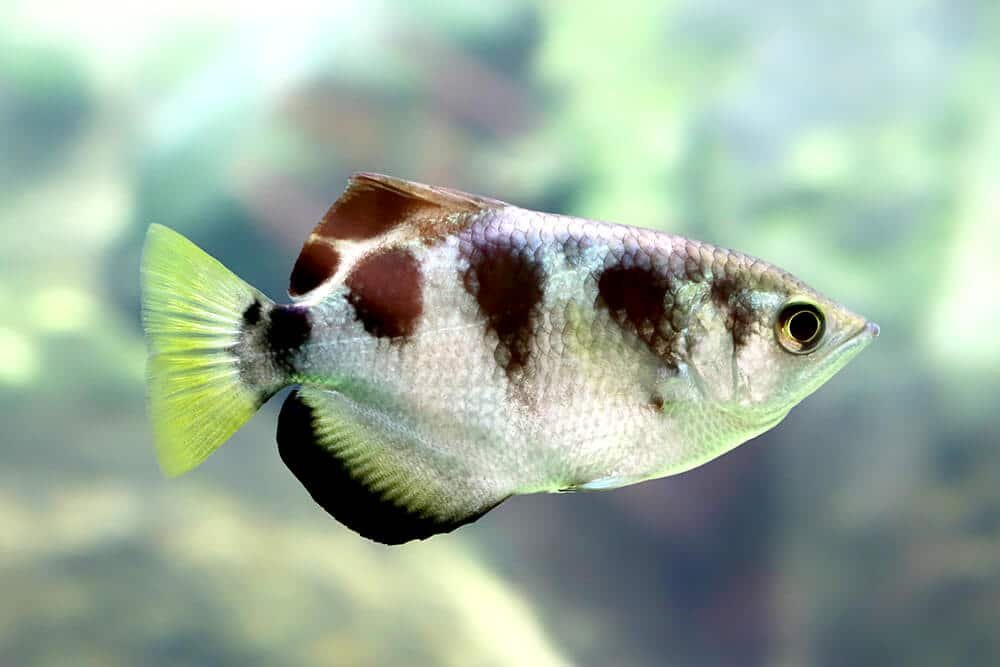
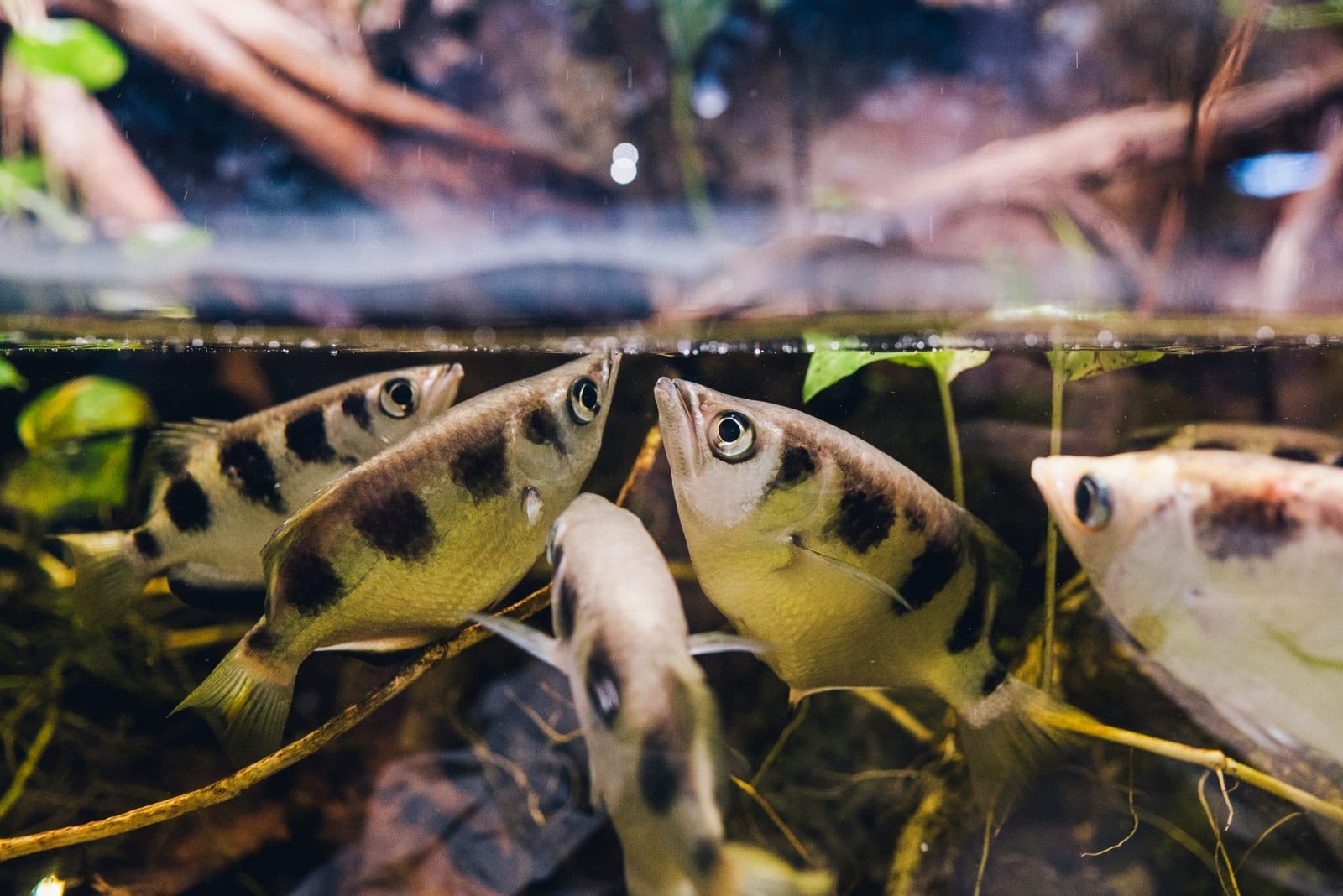
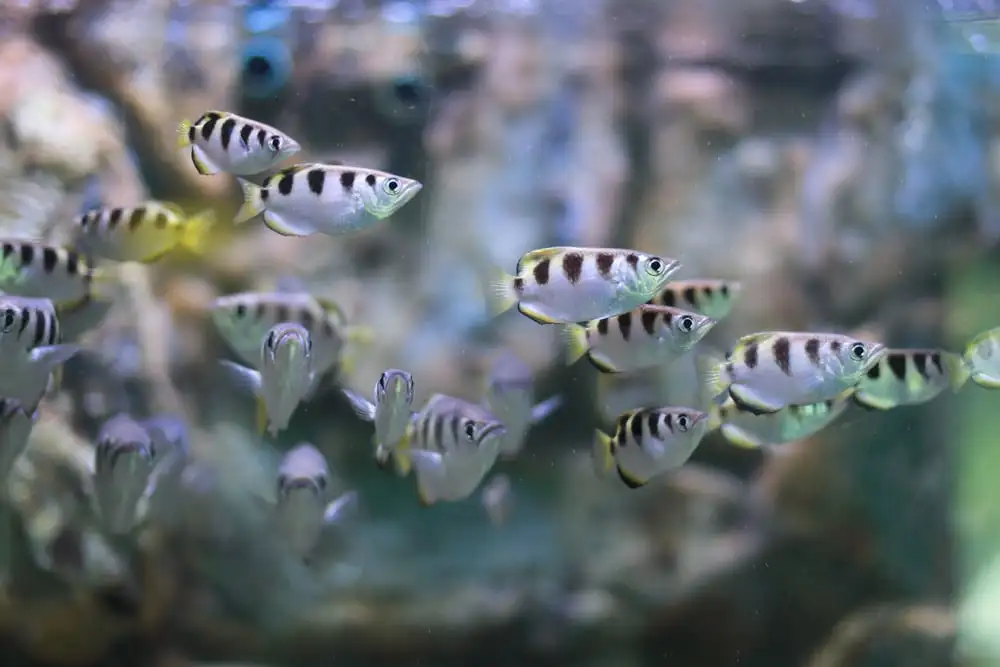
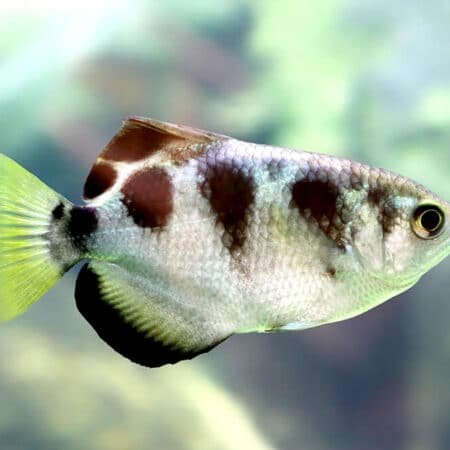

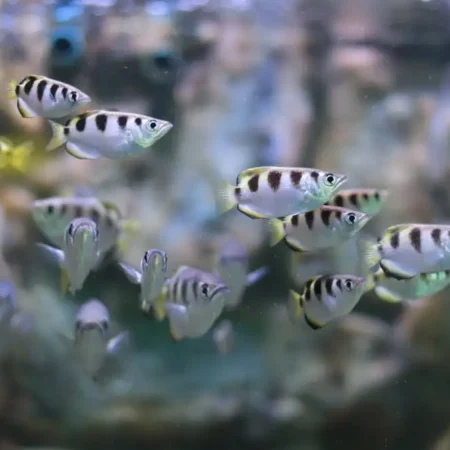
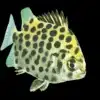
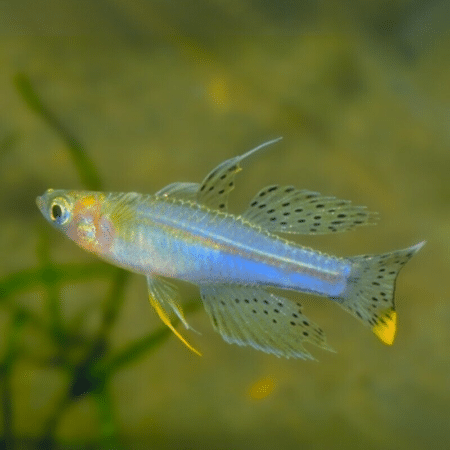



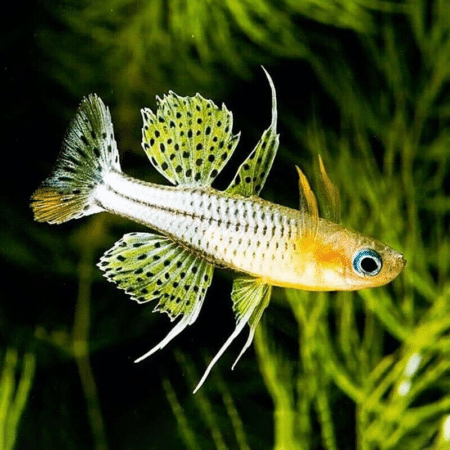



Emily Carter (verified owner) –
I recently welcomed a Banded Archerfish into my brackish aquarium, and it has completely transformed the dynamics of my setup! After about two months of keeping them, I can confidently say they are perfect beginner fish for anyone looking to add a bit of excitement to their tank. Watching them shoot water at their prey is not only fascinating but also shows just how active and engaging these tropical fish can be.
I must admit, I was a bit nervous at first since I wanted to ensure they had the right environment, but with their need for a brackish tank, it was straightforward. I provided plenty of hiding spots and plants, and they have thrived beautifully! Their colors are vibrant, and they interact well with my other fish, which is a bonus.
The only minor concern I had is that they can be a bit territorial, so I recommend keeping them with similarly sized tank mates. Overall, I would highly recommend the Banded Archerfish to fellow aquarists, especially those who want tropical fish that are both captivating and a joy to watch. It’s been a rewarding experience, and I can’t wait to see how they grow!
Emily Rivera (verified owner) –
As a passionate aquarium hobbyist, I am absolutely thrilled with my new Banded Archerfish! I added two of these stunning tropical fish to my brackish setup about three weeks ago, and they have completely transformed my aquarium. Their ability to shoot water at prey is not just fascinating to watch, but it also adds a dynamic aspect to my tank that I’ve never experienced before. Within days, they settled in beautifully, and I was amazed to see them interacting and exploring their environment so actively.
Compared to other fish I’ve kept, like guppies or bettas, the Archerfish are much more engaging and lively, showing a personality that really captivates me. However, I’ve noticed they appreciate slightly more space, so make sure your tank is adequately sized—at least 40 gallons is ideal.
I highly recommend these fish to any aquarist looking to add a touch of excitement to their setup. Just ensure you maintain appropriate brackish conditions and provide plenty of hiding spots. Overall, I couldn’t be happier with my purchase, and I would definitely buy more in the future!